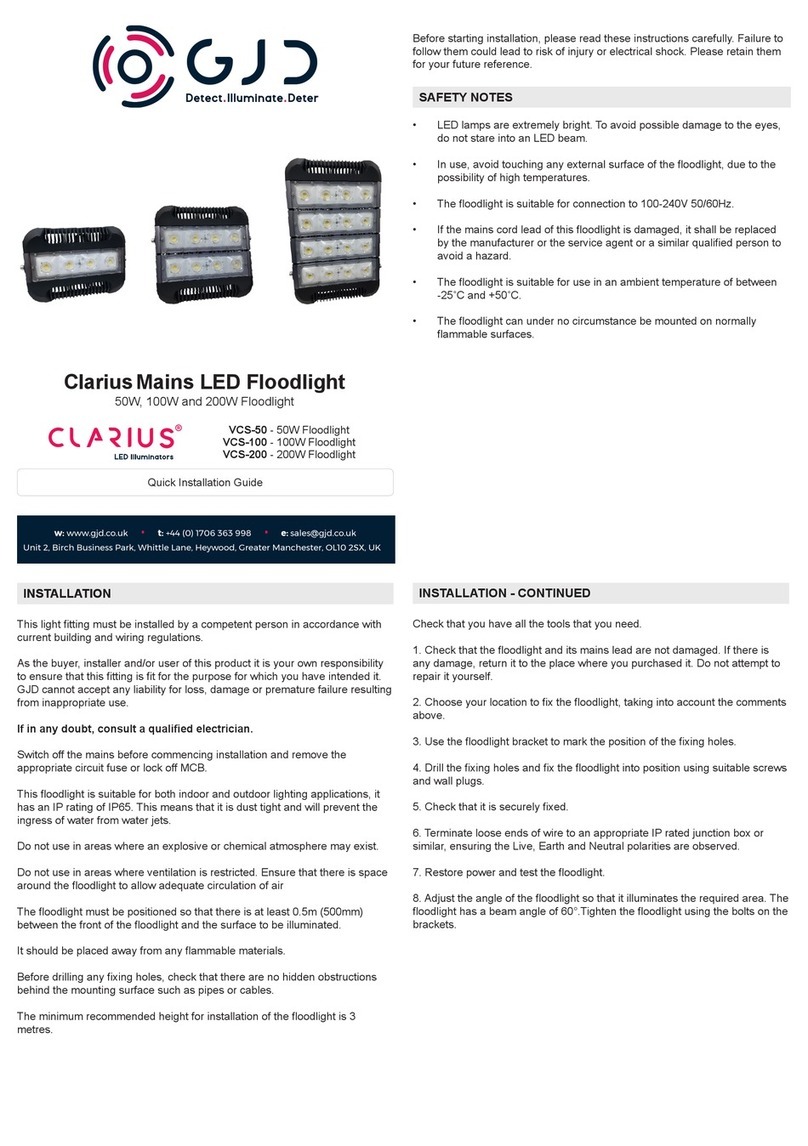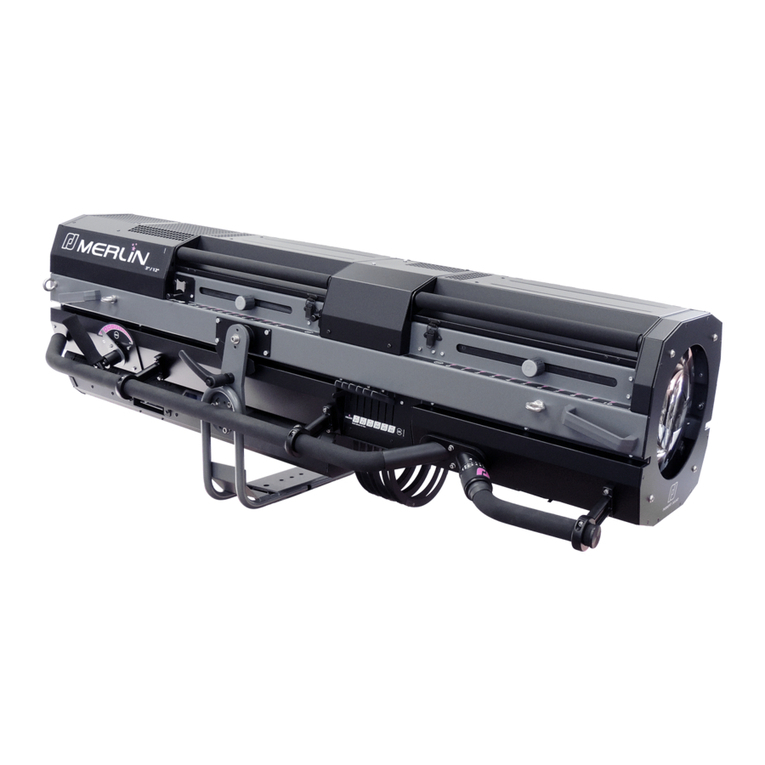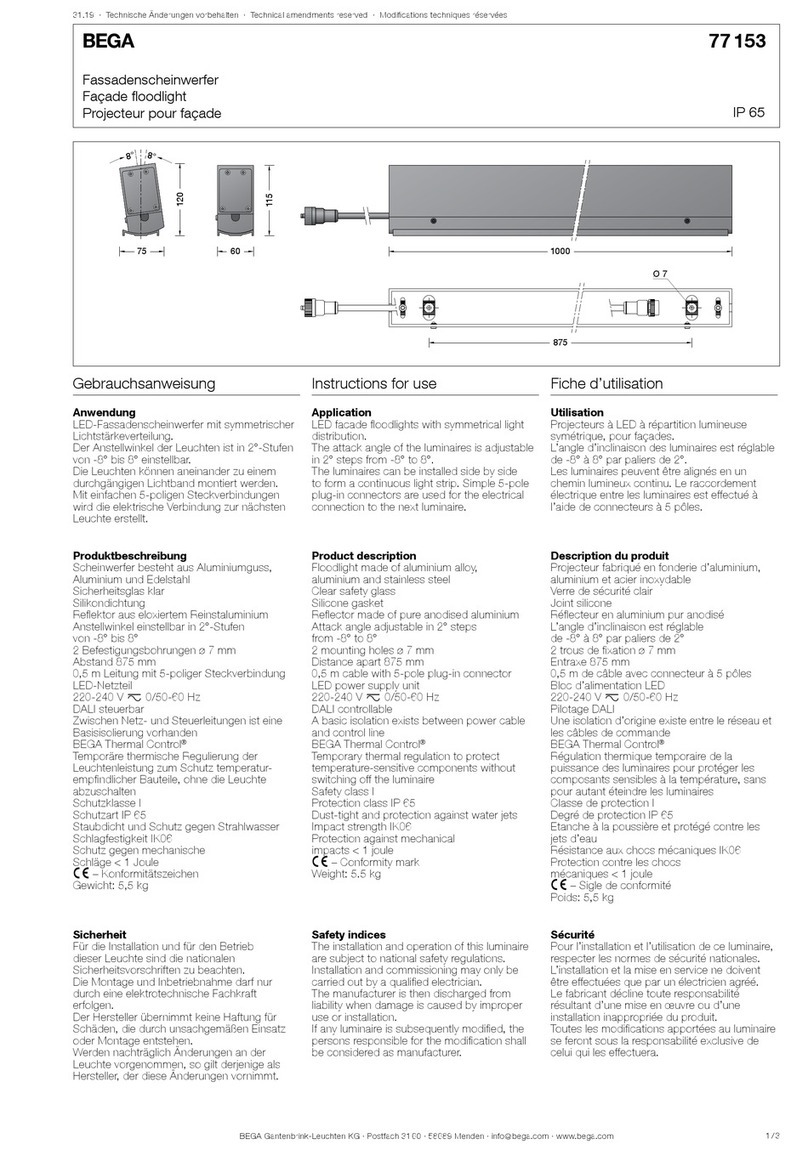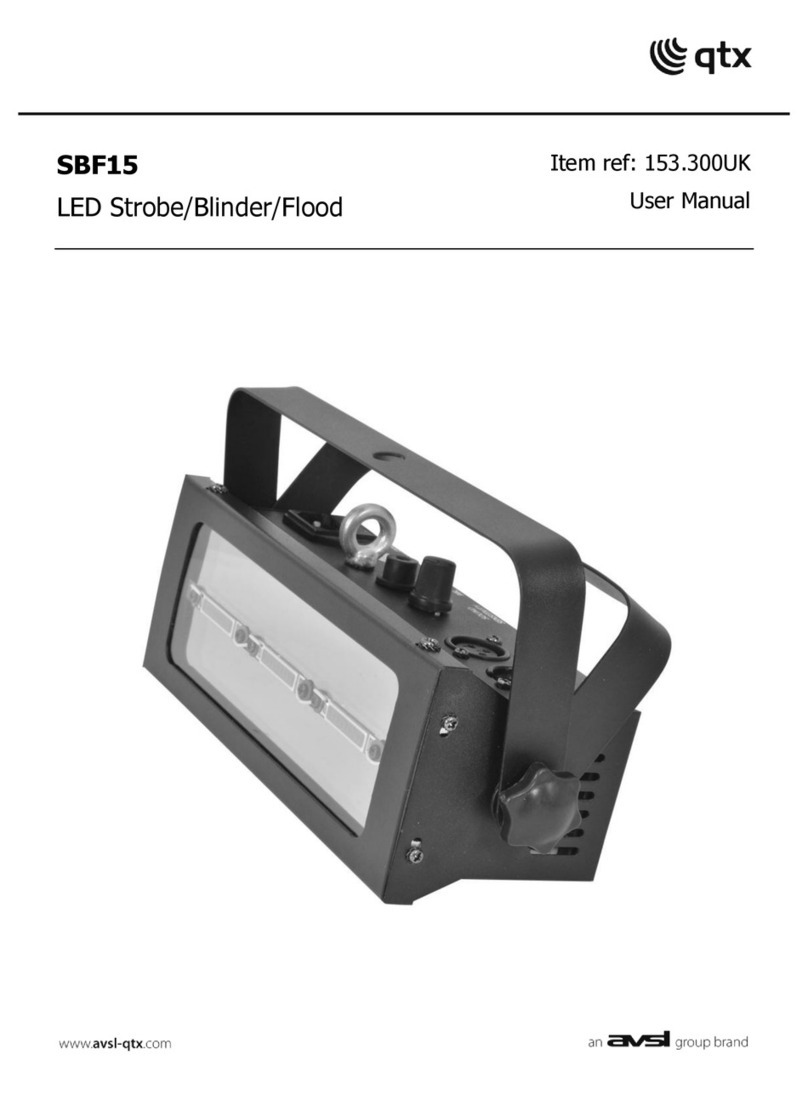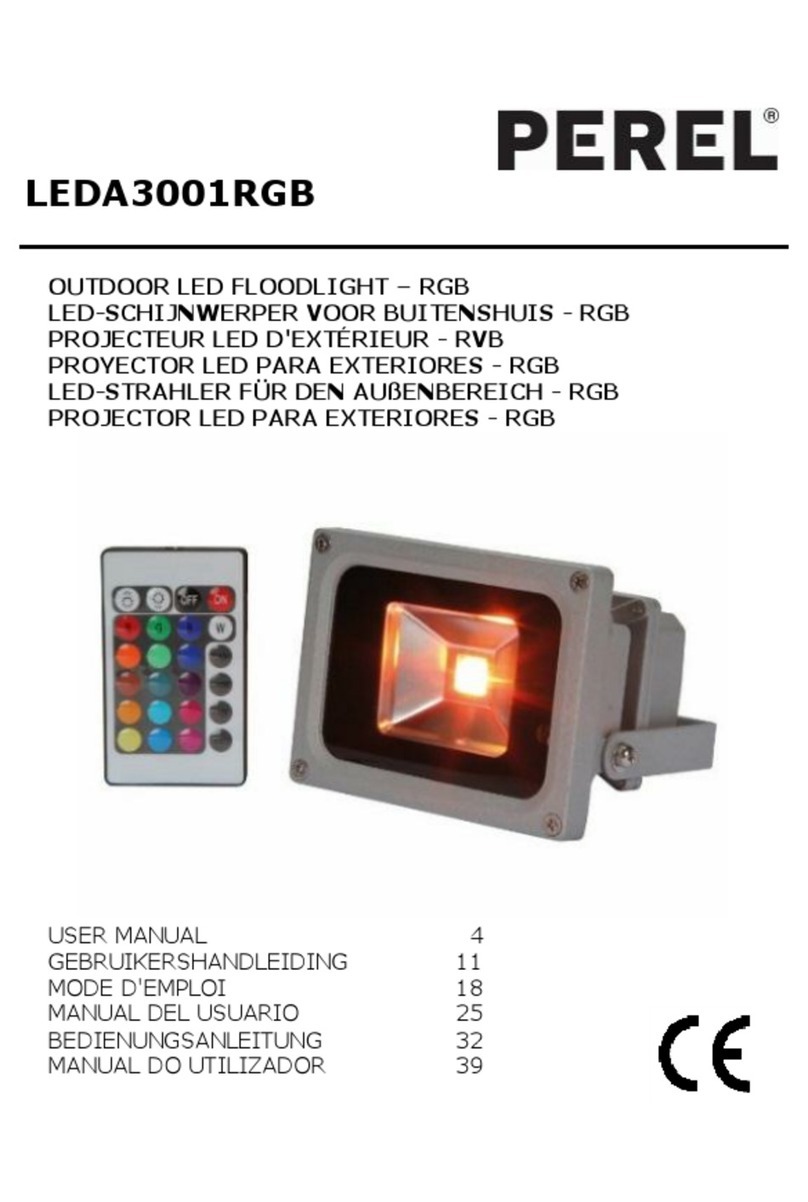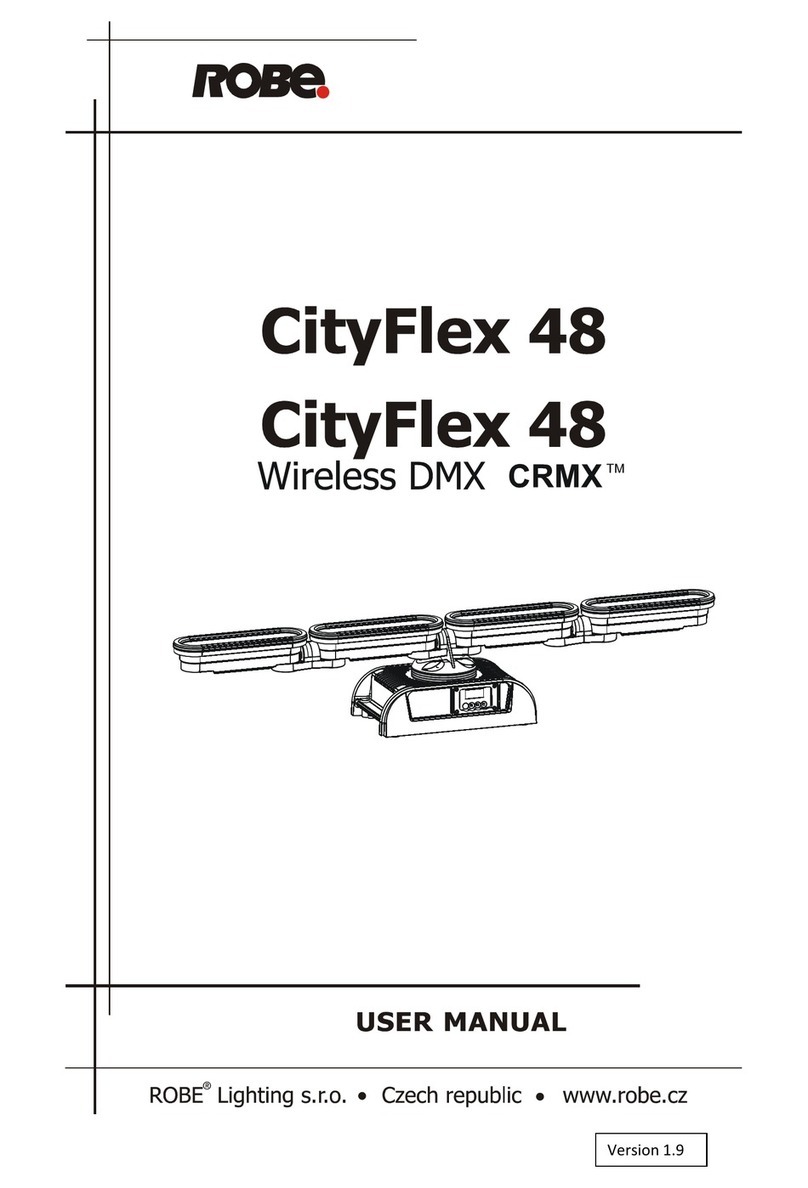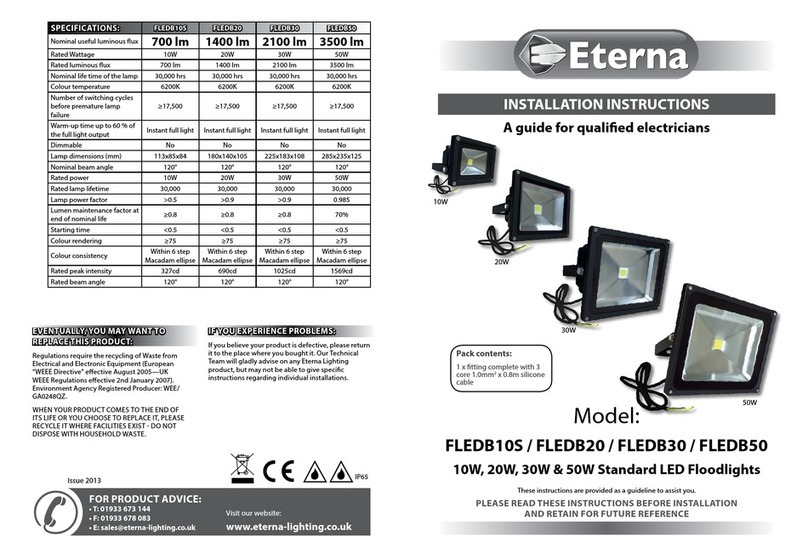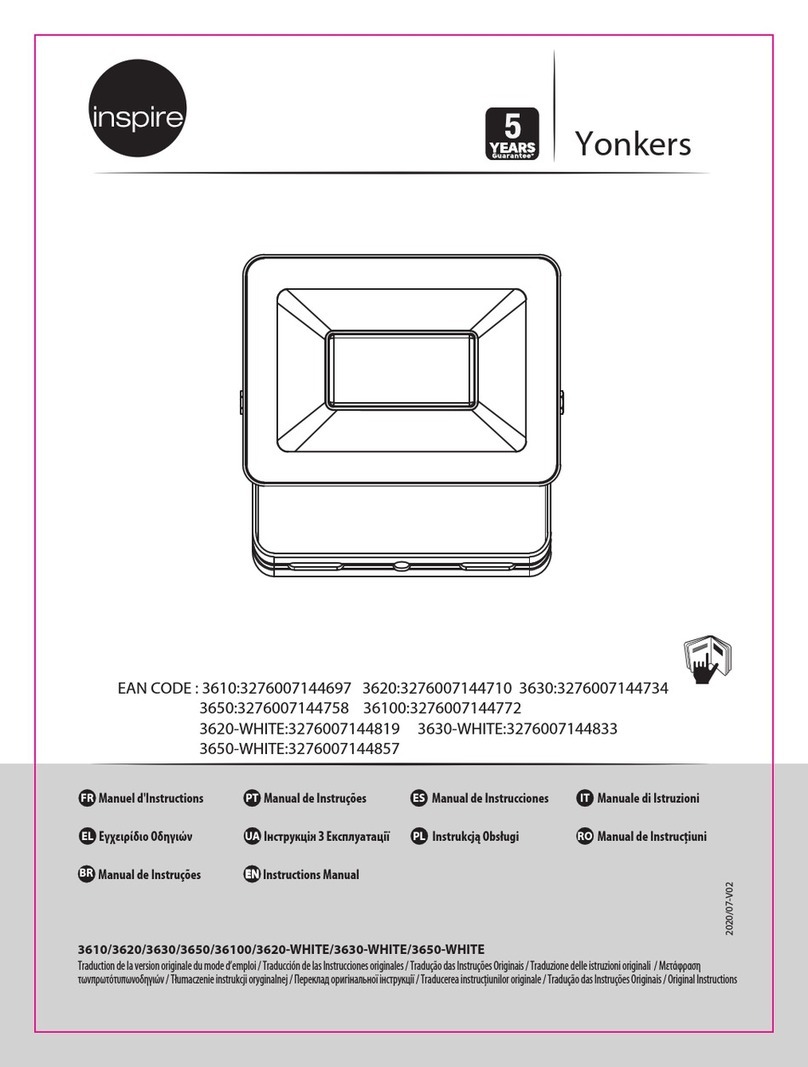GJD Elite GJD022 User manual

An independent passive infrared detector that simultaneously
or individually controls cameras, VCR’s, DVR’s and all low
voltage switching requirements.
The Elite offers a high level of adaptability, there are seven
different modes of operation giving various permutations of
normally open and normally closed arrangements for the
two pairs of volt-free relays, plus a selection of timing and
functional options for the relay changeover contacts.
Other programmable parameters include the duration of
timed changeover, a pulse count feature and a choice of
detection ranges from 10 to 35 metres.
In addition there are two switched negative outputs. The ‘A’
output gives a single 400ms trigger every time the detector
activates and is generally used in conjunction with the GJD
lighting controllers to give 24 hour visual and audible alarm
indication. The ‘S’ output is the only photocell- controlled
output giving a xed 60-second trigger on activation.
The exibility of the four outputs and timers allows the Elite to
be used in multiple situations without the need for any further
customised equipment.
The integral dual axis title sensor allows 180º of pan and 90º
tilt. This increases the speed of the outdoor installation and
provides incredibly accurate aiming of the detection pattern.
The electronics module is acrylic coated for additional
component stability. It is encased in a vandal-resistant high
impact ABS housing with a UV stabilised translucent front
cover ensuring the sensor is impervious to and unaffected by
weather conditions.
The Elites effective design gives a neat appearance with no
visible indication of the orientation of the detector head, and
totally hides the wiring.
Elite
GJD022 /GJD023 35m External PIR
Multi Beam Lens Data
The GJD multifunction lens tted to the GJD Elite detector
produces 9 long range beams and 9 medium to short range
curtain beams. Movement across the beams produces the
best response and range, whilst movement towards the
detector will be less responsive.
When mounting higher than boundary fences rotate the
module and mask off any beams, either vertically or
horizontally, that fall outside the area being covered. Use
portions of the self-adhesive silver mask supplied to the rear,
smooth side, of the lens and always replace the correct way
up as shown to obtain the exact beam pattern coverage.
MULTI-BEAM OPTIMUM
HEIGHT 3 METRES
RANGE MAXIMUM
MODULE TILT 0 DEGREE
LONG RANGE 30
METRE SECTION
10 TO 20 METRE SECTION
010 20
3
0 deg
30 35
MULTI-BEAM OPTIMUM
HEIGHT 6 METRES
RANGE MAXIMUM
MODULE TILT 9 DEGREE
010 20
6
9 deg
30 35
PET IMMUNITY
HEIGHT 1.5 METRES
RANGE MAXIMUM
MODULE TILT -2 DEGREE MASK OFF FOR PET
ALLEY APPLICATIONS
UP TO 35 METRES
1.5
-2 deg
010 20 30 35
0
5
10
15
0520 35
5
10
15
10 15 25 30
Beam Pattern set to maximum
range. Masking top section of lens
will reduce range to 20 metres
0
2
4
6
02814
2
4
6
4610 12
Beam Pattern set to maximum
range. Masking top section of lens
will reduce range to 6 metres
0 5
645
deg
0 5 10 15
CURTAIN COVERAGE
HEIGHT 6 METRES
RANGE MAXIMUM
MODULE TILT 45 DEGREE
MASK OFF FOR
CURTAIN COVERAGE
APPLICATIONS

Changing The Existing Setting
All settings can be changed to suit individual requirements.
The programmable table indicates the factory settings.
Changes to the existing settings can be easily made either
before installation (e.g temporarily power the unit with
a PP3 battery) or by applying 12 volt to the unit on site.
Once changes are made they are stored in the non-volatile
memory, When power is applied the red indicator lights for
0.5 of a second.
1. To enter program mode press and hold down the
program button - the ‘RED’ indicator lights for 4
seconds then the ‘GREEN’ indicator sequences
through the six ‘selections’. One ash for the range,
two for the pulse count. Three- LED monitor. Four- ‘S’
lux level. Five for contact mode and six to change the
timer setting. (see program chart Page 5)
2. When the required ‘selection’ is reached, release the
button.
3. The ‘red’ led then ashes for the number representing
the present ‘option’ setting.
4. If you want to change the present option setting -
hold down the button again within 3 seconds. The
red ashes will then sequence through the options
available for that selection. Release when the number
of red ashes corresponds to your option.
5. The program mode exits after 3 seconds - all
amendments are stored in the non-volatile memory.
EXAMPLE 1: Altering the range from 20 metres to 35 metres
Hold down the program button. The ‘red’ indicator lights -
keep held until the ‘green’ led ashes once then release
- the red led will ash three times - hold again until four red
ashes, the ve red ashes - then release.
EXAMPLE 2: Altering the Alarm 2/ Alarm 1 output mode from
mode 6 to mode 1
Hold down the program button. The ‘red’ indicator lights
- keep held until the sequence of ve ‘green’ ashes then
release - the red led will ash six times - hold again until
seven red, then one red ash then release.
To reset to factory settings
Power down the unit and then power back up whilst holding
the program button in. Release the program button when the
indicator ashes green.
ELITE PROGRAM TABLE
GREEN SELECTIONS
1x Range - Mtrs
(Approx)
10 15 20 28 35
2x Pulse Count 1 2 3 4
3x LED Monitor OFF/
TP
ON/
TP
OFF/
NT
ON/
NT
OFF/
LO
4x ‘S’ Output Lux
Level
2 5 25 30 60 120 240 24
HR
5x Alarm 2 /
Alarm 1
Mode
1 2 3 4 5 67
6x Alarm 2 /
Alarm 1
2 5 10 15 20 25 30 45 60
Red Options 1x 2x 3x 4x 5x 6x 7x 8x 9x
Shaded boxes are the factory settings
RANGE
The range of the detector can be set from 10 to 35 metres.
See the multi-beam lens data on page 1 for masking off
areas to reduce the range further or pet alley requirements.
PULSE COUNT
The number of beams that have to be crossed before
activation.
1 - will give a fast response
2 - gives good immunity & response
3 - gives high immunity to false alarms
4 - slow repose use in areas with poor environments ( e.g
excessive foliage)
The unit detects the changes in heat and movement in the
beam pattern area, therefore trees, shrubs, ponds, boiler
ues and animals should be considered when positioning the
detector.
LED MONITOR
OFF/tp: Detection indicator ‘off’ select this when requiring
Tamper outputs with mode 1 and mode 7
ON/tp: Detection indicator ‘on’ select this option when
requiring Tamper outputs with mode 1 and mode 7 (see page
6)
OFF/nt: The indicator is’off; - both Alarm 2 & Alarm 1 outputs
activate on detection
ON/nt: The indicator is on - both Alarm 2 and Alarm 1 outputs
activate on detection.
OFF/lo: Low power mode supply 5mA - only the ‘A’ and ‘S”
output operate - no led indication.
‘S’ OUTPUT
The light level that the ‘S’ -ve output operates. The factory
setting is ‘5’ lux. This is generally considered the average
light level at dusk. 24 hr activates the ‘S’ output irrespective
of light level.
ALARM 2 / ALARM 1 MODE
There are seven different normally open and normally closed
modes that the 24 hour volt free contacts can be utilised. See
page 6 for these options.
TIMER ALARM 2 / ALARM 1
The timer settings available for the Alarm 1 and Alarm 2 volt
free outputs.

MODE VOLT FREE OUTPUT STATE ACTION ON DETECTION
Mode 1 Alarm 2 Normally Open will close for the TIMER period after detection
TAMPER e.g. MUX and
Alarm panel option
Normally Closed remain closed on detection. Utilise the Alarm 1 connection
for tamper loop. The output will also open for 2 seconds if
the front cover is removed.
Mode 2 Alarm 2 Normally Open will close for the TIMER period after detection
Alarm 1 Normally Open will close for the TIMER period after detection
Mode 3 Alarm 2
(Factory Settings)
Normally Open Will close for the TIMER period after detection
Alarm 1
(Factory Settings)
Normally Closed Will open for the TIMER period after detection
Mode 4 Alarm 2 Normally Open will close for 0.4 second every time a detection takes
place
Alarm 1 Normally Closed will open for the TIMER period after detection
Mode 5 Alarm 2 Normally Open will close for 0.4 second and can only re-trigger with
detection after 4 seconds of non-activity
Alarm 1 Normally Closed will open for the TIMER period after detection
Mode 6 Alarm 2 Normally Open will close for 0.4 second and can only ve re-triggered
every 4 seconds with detection
Alarm 1 Normally Open will close for the TIMER period after detection
Mode 7 Alarm 2 Normally Closed will open for the TIMER period after detection
TAMPER
e.g. MUX and alarm panel
option
Normally Closed remain closed on detection. Utilise the Alarm 1
connections for tamper loop. The housing is pressure
regulated - the output will also open for 2 seconds if the
front cover is removed
VOLT FREE OUTPUTS ALARM 1, ALARM 2 & TAMPER
INSTALLATION
During installation the electronics must be protected against
water, as trapped moisture can effect or damage the unit.
1.First remove the front polythene cover by pulling forwards,
then remove the lens module by pulling it out of the forked
bracket.
2. Drill the wall to accept the top xing and the lower cable
entry. The holes should be on 16mm centres.
3. Feed standard 8 core alarm cable into lower cable entry:
bare the wires and connect to the removable terminal block.
4. Always ensure when replacing the module that it is the
correct way up for the correct alignment of the beam pattern.
5. Replace the front cover with the ventilation hole at the
bottom. Ensure the cover engages both sides of the outer
casing before pressing rmly to locate it securely.
At this stage the unit can be walk tester with the front cover
tted. Use the program table on page 5 to adjust the range
as necessary and pan and tilt the lens module over the eld
of view to obtain the correct coverage area.
TESTING USING A METER
Testing the volt free contacts - as the Elite has an integral
25R series resistor the meter should be set to greater that
100 ohms rather than a continuity test setting.
WALK TEST
Alignment of detection beams
The range of the detector increase without the front
protective cover. Therefore the front cover must be tted
to establish the correct beam pattern alignment and when
testing the outputs. When the ‘program’ button is pressed
momentarily the red indicator lights and pulse count ‘1’ is
automatically selected. The unit can then be aligned. The red
indicator will light on the Elite every time a detection takes
place. This test mode will automatically cancel ve minutes
after last detection. Alternatively, remove the power and then
re-apply.
If automatic lighting is required to illuminate the area during
recording, the Elite PIR connects directly into any of the GJD
lighting controllers for simultaneous recording and automatic
lighting at dusk. The signals from the detector also provide
an audible and visual indication of the detection activity
24 hours a day. As the controllers also have a pulse count
option, this must be set to ‘1’ on the controller when using the
Elite PIR for event recording.

ELITE APPLICATIONS
STANDARD WIRING
Alarm 1 and Alarm 2 outputs active on detection
24 hours a day see page 5 for congurations
of normally open or normally closed contacts.
Mode-2 to Mode-6
MUX APPLICATION:
When tamper is required select either:
Mode-1 Normally Open - Alarm 2 /Alarm
Normally Closed - Tamper
or
Mode-7 Normally Closed - Alarm 2/Alarm
Normally Closed - Tamper
select LED OFF/tp or LED ON/tp
ALARM PANEL:
When tamper is required select either:
Mode-1 Normally Open - Alarm 2/Alarm
Normally Closed - Tamper
or
Mode-7 Normally Closed - Alarm 2/Alarm
Normally Closed - Tamper
select LED OFF/tp or LED ON/tp
STANDARD
Standard wiring - two pairs of 24 hour volt free
outputs combined with infra red lighting activated
at dusk for 60 seconds after last detection.
Mode-2 to Mode-6.
Alarm 1
Alarm 2
Alarm 1
Alarm 2
Alarm 1
Alarm 2
Alarm 1
Alarm 2

Technical: 01706 363990
Sales: 01706 363998
Fax: 01706 363991
Email: [email protected]
Elite Specications
Detection Area 10 to 35 metres (adjustable) up to 750 sq metres
Coverage 90 degree 35 metres x 30 metres max
Adjustment 180 degree pan + 90 degree tilt
Area reduction mask (if required)
Fresnel Lens 36 zone-White Light Filter
Customised Optics Double silicon shielded dual element eliminates 50,000
lux of white light
Outputs Silent solid state magnetically immune
No.1 Alarm 2 Output Volt free relay signal contact - 24VAC/
DC @50mA with an integral 25R
series resistor; selectable normally
open/normally closed. Adjustable timer
options: 2 to 60 seconds
No.2 Alarm 1 Output Volt free relay signal contact- 24VAC/
DC @ 50mA. Selectable normally
open/normally closed with an integral
25R series resistor. Adjustable timer
options: 2 to 60 seconds
No.3 Output ‘A’ Open collector negative switching -
25mA max. Alarm period 400ms
No.4 Output ‘S’ Open collector negative - 25mA max.
Alarm period: detection + 60 seconds
Adjustable: Dusk (2 lux) to 24 hour
Power Input 9 to 15 VDC
Current 10mA (12V nominal)
Pulse Count 1 (2,3 & 4 previous Detection < 6 seconds)
Tamper Selectable - Mode 1 or 7 plus output opens for 2
seconds when cover removed and/or ‘A’ & ‘S’ outputs
pulse for 60 seconds
Temp.Compensation Digital sensitivity adjustment
Control Digital ASIC/microprocessor - non volatile memory
Walk Test Output test mode with LED indication
Operating Temp. -20 to +55 centigrade
Conformally coated electronics for increased stability
Housing High Impact ABS
Protection Rating IP55
Dimension 104 x 104 x 94mm
Weight 145 grams
Mounting Height Variable - optimum height 3 metres
Cable <200 metres
Cable <500 metres
Utilising all four outputs - 8 core 7/0.2mm
Utilising all four outputs - 8 core 16/0.2mm
This manual suits for next models
1
Table of contents
Other GJD Floodlight manuals
